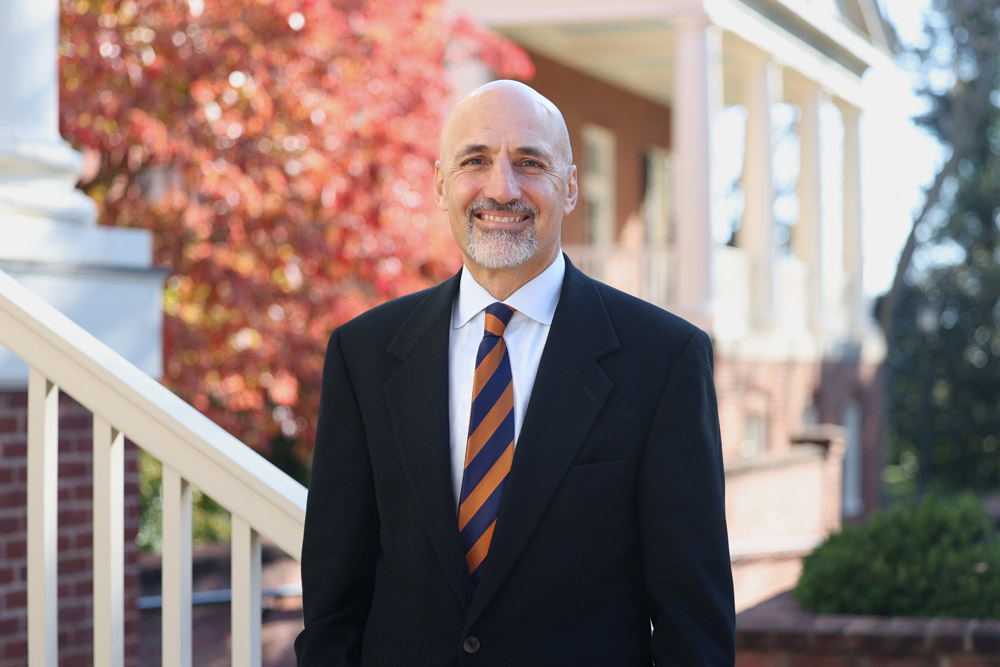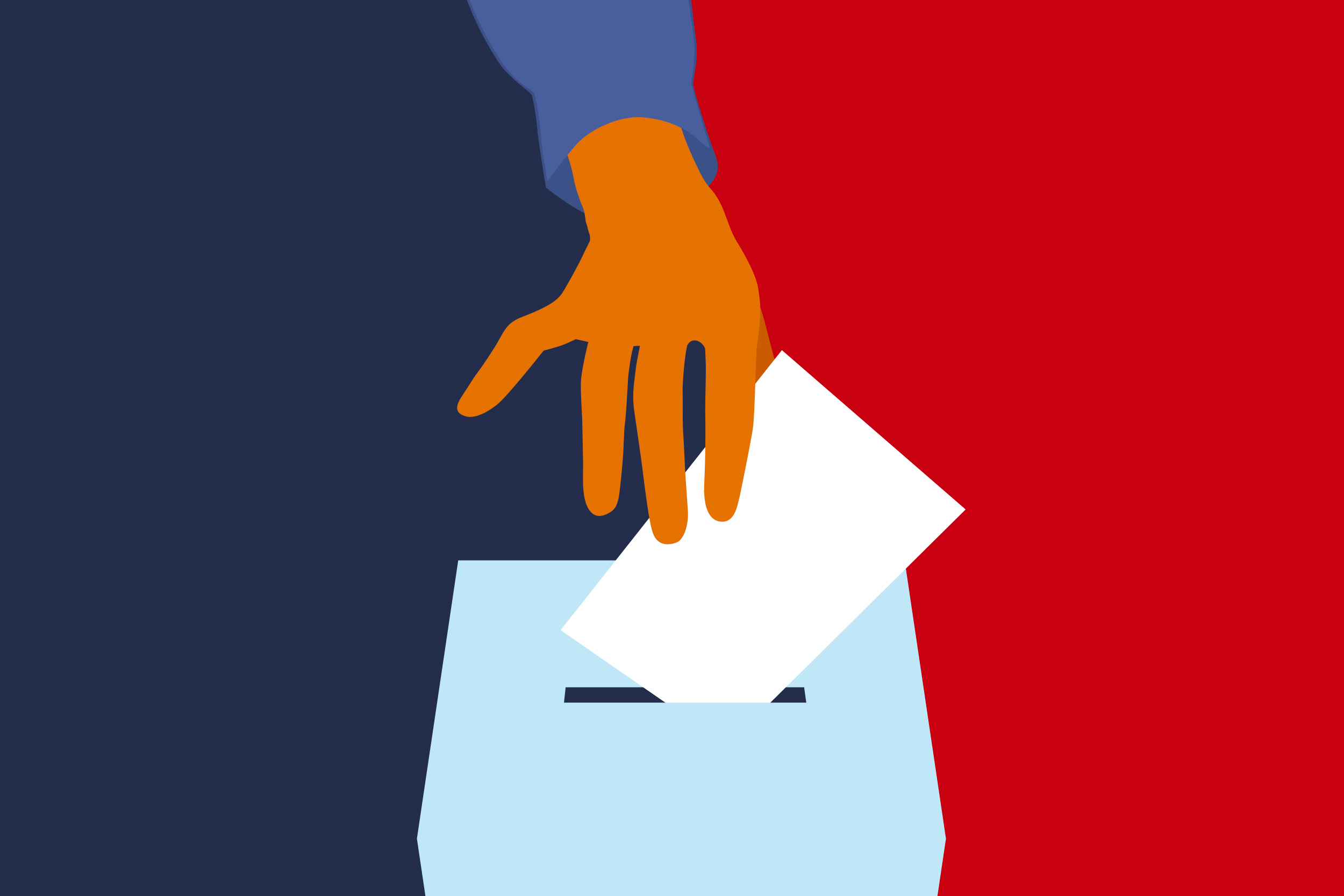Many Wahoos will make their first presidential choices Tuesday. And they’ll be choosing between two candidates who landed at the top of the ticket through unusual paths.
UVA Today asked William Antholis, director and CEO of the University of Virginia’s Miller Center of Public Affairs, to put the circumstances of this election into perspective. Antholis, a 1986 UVA graduate, previously served as managing director at The Brookings Institution and held positions at the White House National Security Council and State Department.
Q. This election will be the first time many in our community cast a ballot. What should they know about this election and how unique it is to U.S. history?
A. As wild as this election has seemed, both of those plot twists have happened before. And they seem to favor former President Trump.
Grover Cleveland won the White House in 1884, lost in 1888, and won it back in 1892.
And in March 1968, Lyndon Johnson decided to not run for reelection that November. Democrats eventually nominated his vice president, Hubert Humphrey, who lost narrowly to Richard Nixon.
There’s one other important echo of history: A sitting vice president is seeking a promotion. That’s happened quite often. But sitting VPs don’t always win.
Four sitting VPs have won. John Adams succeeded George Washington. Thomas Jefferson succeeded Adams. Martin Van Buren succeeded Andrew Jackson. And George H.W. Bush succeeded Ronald Reagan.
But five sitting VPs have lost: John Breckenridge lost to Abraham Lincoln, Nixon lost to John Kennedy, Humphrey lost to Nixon, Walter Mondale lost to Reagan, and Al Gore lost to George W. Bush.
What is unprecedented? We’ve never had a candidate convicted of felonies ascend to the White House. Nor have we elected a woman, let alone a Black or Asian woman. So one way or the other, this election will make history.
Q. With a few exceptions, it’s an expectation of modern voters to know the outcome of the presidential race on Election Day, or maybe early the following day. Are you expecting delays this year? If so, what might hold up the tally?

William Antholis, director of UVA’s Miller Center for Public Affairs, says these two presidential candidates landed on the ballot through unusual paths, but there are historic similarities. (Photo by Matt Riley, University Communications)
A. This election is very close. Very, very close! If the polls are right, the earliest we will know is the next morning. But it may take days.
The biggest reason: More voters cast their ballots by mail. In key swing states, election officials can only start processing mail-in and absentee ballots on Election Day. Mail-in and absentee ballots already account for 20% to 40% of the vote in key states, which means 1-2 million votes per state.
Processing, counting and securing those ballots takes a while. For each ballot, election officials must open two envelopes: one that contains information about the voter, and a second that is anonymous, which contains the actual ballot. Poll workers must open the first envelope to check for registration and signature. Then they must open the second envelope, and unfold, flatten and scan the ballot. They must then secure the ballot in case of a recount. And they must repeat that a couple million times. It is literally tens of thousands of hours of work in each state.
This chart shows when the various swing states can start the processing and counting. As you can see, by law, many states don’t allow processing until Election Day morning. In North Carolina, that only happens on election night.
Q. Most political scholars say the last true landslide was in 1984’s Ronald Reagan vs. Walter Mondale contest. From then on, the votes have been more evenly split. Are the days of landslides over?
A. The margin of victory has indeed shrunk. Reagan won 49 of the 50 states and 525 of the 538 electoral votes. George H.W. Bush also won big over Michael Dukakis in 1988 – let’s call that a rockslide. Bush took 43 states and won the Electoral College 426-112.
Since then, we have had three squeakers. In 2000, George W. Bush beat Al Gore 271 to 267. He won Florida by just over 500 total votes, and it took five weeks to certify the winner. In 2016 and 2020, the outcome came down to about 1% of the vote in three states.
If the polls are right, the 2024 election will follow suit.
Then again, Bill Clinton won two comfortable victories, and Barack Obama’s two wins were bigger than polls suggested. In both 2008 and 2012, African Americans and younger voters had historic turnouts. Little swings can make a big difference.
Q. If there is a significant delay in determining the winner, does that tend to legitimize the integrity of the election in the minds of voters, or does it have the opposite effect?
A. Long delays can undermine confidence in the process, particularly if the candidates themselves argue that the process is unfair.
In 2000, during the Bush vs. Gore recount, both sides lobbied vigorously for how to conduct a recount, as well as for how long the recount should last. Al Gore and his supporters were quite upset at the U.S. Supreme Court for stopping the counting. And yet Gore conceded defeat, which had the effect of lowering the national temperature.










